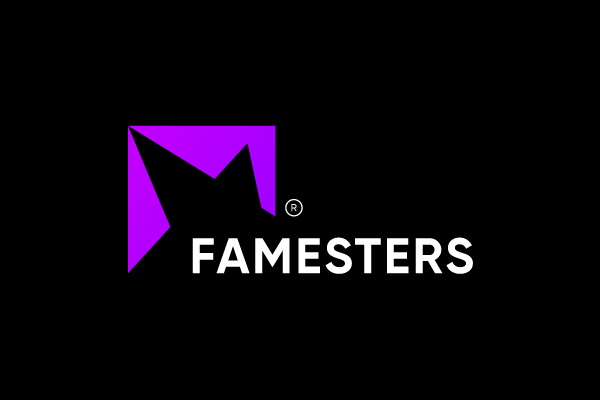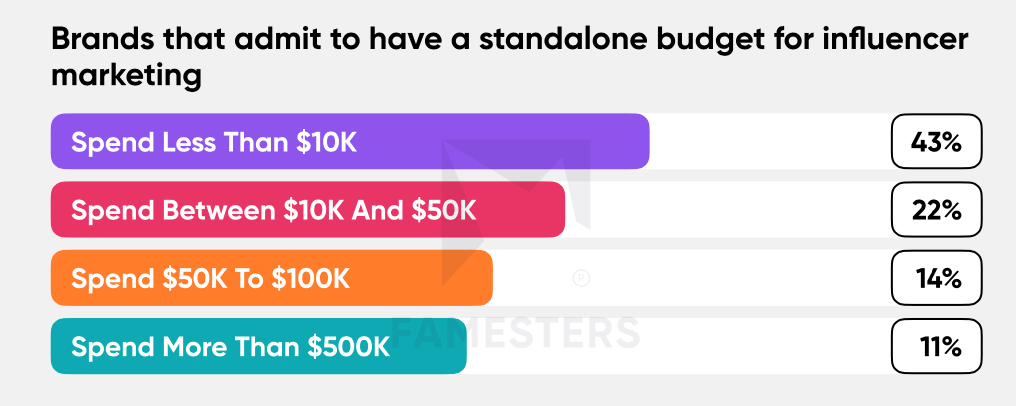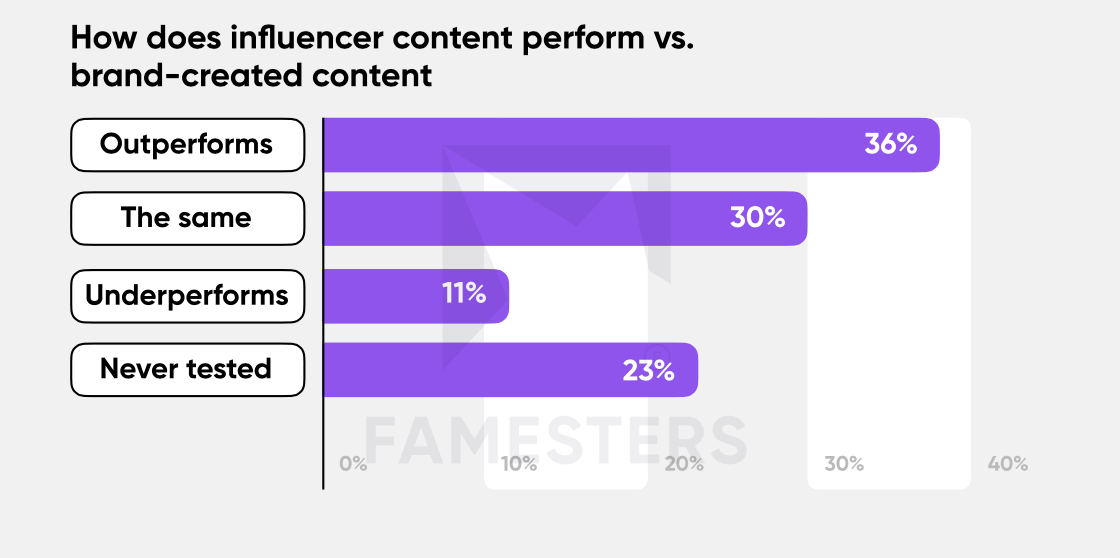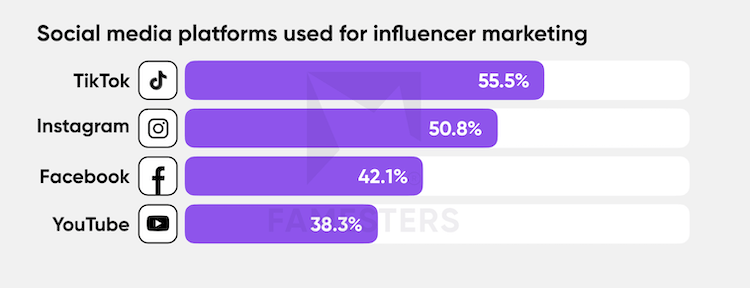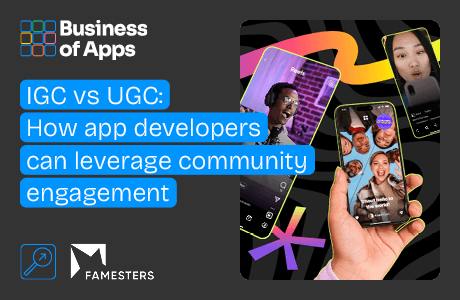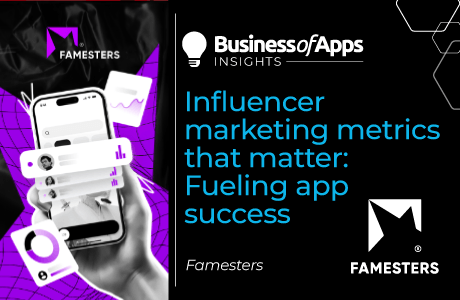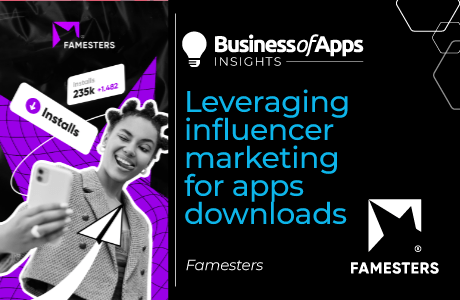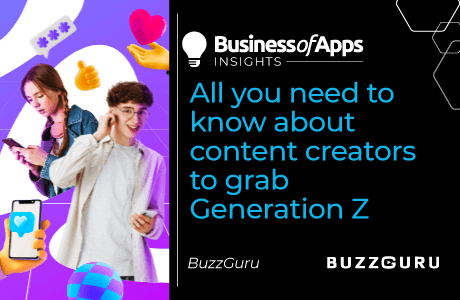App developers resort to and test various marketing strategies to increase downloads and in-app purchases. Meanwhile, when speaking about working marketing tactics, it is impossible to ignore one of the booming ones – influencer marketing. Year by year, brands recognize the value of this acquisition channel and use it consistently. Let’s take a look at figures.
- Market size. The global influencer marketing value stood at US $21.1 billion in 2023 and is projected to reach US $24 billion this year.
Source: Statista
- Brands’ spendings. In 2023, 63% of brands allocated a standalone budget for influencer marketing. Meanwhile, 67% of these brands stated they boosted their influencer marketing spending for 2024.
- Social media platforms. Instagram and TikTok are leading platforms for influencer marketing due to their high engagement rates and broad user bases. In 2024, 89% of marketers plan to launch campaigns on Instagram, while 77% intend to sponsor TikTok creators. YouTube is also seeing a rise in influencer marketing spending, projected to increase by 40% in 2024.
- Influencer marketing budgets. 43% of marketeers state that their influencer marketing budget is less than $10K, while 47% have it higher than that. Impressive, right?
Source: Famesters
- Profitability. 66% of brands admit that influencer marketing performs equally or better compared to content created by brands.
Source: Famesters
Why do apps need influencer marketing?
It’s no secret that influencer marketing is a lucrative channel. Around five years ago, it was believed that influencer marketing was purely a brand awareness tool. Yes, it works perfectly to grow awareness and trust, but the profit for brands has advanced much further. Today, it is a performance channel that delivers measurable business results, including increased sales. Compared to traditional advertising methods, influencer marketing often provides a higher return on investment when strategized correctly. For every $1 spent, it is possible to generate an average of $6 to $20, resulting in the ROI of up to 600% or more.
Influencer marketing provides genuine engagement, precise audience targeting. 63% of internet Gen Z’s use ad blockers ro avoid advertising, but they still see influencer content. Influencers present products unobtrusively, which results in a native advertising and makes influencer marketing an effective way to reach audiences who avoid traditional ads. What is also interesting is that around 50% of Gen Z’s prefer to research brands on social media over Google or other searching engines. For millennials, this percentage is 35%.
We can endlessly list benefits influencer marketing delivers to brands, but the truth is that marketers agree that leveraging the reach and credibility of influencers can significantly enhance an app’s visibility, user engagement, and download rates.
Alongside the benefits come decisions and actions. There are two options to start or restart influencer marketing activities: hire an agency or manage it on your own. With our extensive experience in app promotion, we have witnessed many cases that explain why brands come to agencies like Famesters. Here are some of them:
- Lack of expertise in influencer marketing.
- Urge in opening new markets.
- Aim to scale influencer marketing efforts.
- Difficulties in search and discovery of relevant influencers.
- Inability to stay in touch with influencers 24/7 and control content release according to the agreed timeline.
- Complex & non-trivial products.
- Aim to conquer the market and stand out from competitors.
- Difficulties in measuring results.
Launching influencer marketing campaigns in-house is another option. However, despite the potential of this channel, many app marketers make common mistakes that can undermine their efforts and lead to poor results. Having numerous successful cases in promoting apps and other digital products through influencers, in this article the Famesters agency will shed light on the 5 most prevalent mistakes in influencer marketing and provide actionable insights to avoid them.
1. Failing to set clear KPIs and measure campaign performance
It is obvious that the more precise, measurable, and achievable your KPIs and goals are, the better results you will get from your marketing campaigns. With clear KPIs set it is easy to understand the effectiveness of your influencer marketing efforts and find out what’s working and what’s not. This analysis helps adjust strategy in time, save marketing budget and get the highest performance possible. But what are the KPIs does your app need? Only you can determine this. Take a look at how clear expectations led to increase of paid subscriptions for Babbel, or how we helped ChillBase acquire users from Tier-1 countries.
Ultimate App Growth Guide 2025
Boost your app’s success with the Ultimate App Growth Guide! 🚀 Expert insights, proven strategies & must-know tips. Download now!
Master app growthTypically, influencer marketing campaigns are divided into two types:
1. Brand awareness campaign, aiming to maximize brands reach, awareness and trust. According to our research, most of the brands – 49.6% – measure the success of their influencer marketing campaigns by views, reach and impressions.
Source: Famesters
2. Performance campaign, that is concentrated on delivering measurable results, such as installs, subscription purchase, and others.
If you are focused on performance, always set clear and measurable goals. The key metrics often vary by business niche. What is important for fintech will not work for retail. As for the app industry, influencer marketing campaigns typically focused on three critical metrics:
1. Install rate: indicates the number of app downloads achieved through the campaign.
2. Retention rate: measures the percentage of users who continue using your app after downloading it. It’s represented by the DAU/MAU ratio, calculated by dividing the number of daily active users by the total monthly active users.
3. Lifetime value (LTV): Estimates the total revenue from a user, guiding ROI calculations and acquisition strategies.
Also, the KPIs can include cost per install, click-through rate, conversion rate, engagement, brand awareness, user acquisition cost, and others. We have already covered app influencer marketing metrics and how to count them, which you can explore in detail here.
2. Ignoring organic traffic
While measuring campaign outcomes, many marketers (especially those who are new to influencer marketing) forget about one very important detail – organic traffic. Why does it matter? Organic traffic rate coming from influencer marketing campaigns usually varies from 40% to 70% of the total amount of installs or purchases. Impressive.
Always measure the organic traffic apart from UTM links from influencers’ accounts. Many users might not follow the link after seeing integration on YouTube, or TikTok. Instead they could remember about your product in some days or simply go directly to the app store on their smartphone while watching a YouTube video on their computer.
How to measure: in case collaboration with creators at that moment was the only marketing activity for your app, measure the organic traffic before and after your integration (in a week, for example). This spike will demonstrate the organic traffic from your influencer marketing collaboration.
3. Overlooking TikTokers content creation preferences
Video content rules. Especially short videos created by influencers, such as app reviews and tutorials. This content generates 2.1 times more engagement compared to non-video posts.
TikTok is the most popular social media platform for brand marketers, with 55.5% of them preferring to launch their influencer marketing campaigns there. To compare, for Instagram this rate is 50.8%, Facebook has 42.1%, and YouTube stands at 38.3%.
On TikTok, many app companies aim to purchase the rights to influencer-created content.
Source: Famesters
However, they often overlook that TikTokers prefer creating content directly on the platform instead of using their smartphones. It results in the final creative material having a TikTok watermark.
To avoid this, app companies need to be explicit in their contracts about content requirements and usage rights. Clear communication and a well-structured influencer brief ensures both parties understand expectations, leading to more effective campaigns.
4. Hesitating too long
Another mistake app marketers make in terms of influencer marketing is overthinking social media trends instead of acting swiftly. As trends occur unexpectedly they are also quickly to leave. Taking too long to plan breaking into the trend can result in outdated appearance of the brand. This diminishes the effectiveness of the campaign and even can irritate users.
This advice applies to social media marketing as well. Look at Duolingo and their hilarious content with viral memes: their in-time adoption to trends results in great outcomes. According to a Duolingo report, their paid subscribers at the end of Q4 2023 totaled 6.6 million, marking a 57% increase from the previous year.
@duolingo honored Greta asked me to replace Margot #duolingo #languagelearning #barbie #barbiepremiere #barbiechallenge #barbenheimer ♬ original sound – Model Commissions OPEN – Diya
As for influencer marketing, here marketers need to act even faster. If content approval is delayed, the reach and impact can drop significantly as audience interests shift rapidly. To keep your stats maximized, it’s crucial to stay updated on what’s happening in the influencers’ life and the current trends.
Here is Duo having fun at @noahandlori wedding:
@noahandlori Im absolutely framing the last picture of Noah 🤣 #whathappensinvegas @Duolingo #duolingo #duolingopartner #vowrenewal #love #funny #joke #couple ♬ original sound – Noah and Lori
Quick, decisive action ensures your content remains relevant and engaging.
5. Relying on a single-platform strategy
Many app marketers forget to use a multi-platform approach in their influencer marketing campaigns. Relying solely on one platform limits potential reach and engagement. Most influencers have a presence across multiple platforms like Instagram, YouTube, TikTok, X, Kick, and more at the same time; and each platform offers unique opportunities for app growth.
Do not hesitate to ask influencers for promotion across their other channels. This approach ensures a broader reach and diversified audience engagement. For instance, TikTok captures a younger demographic with short videos, while YouTube provides in-depth reviews, and X facilitates real-time interactions. This strategy keeps your marketing fresh and appealing to different user preferences, ultimately driving higher engagement and more substantial growth.
In conclusion
While app developers explore different strategies to boost downloads and in-app purchases, influencer marketing proves to be exceptionally effective. However, to fully leverage its potential, it is crucial to understand multiple nuances and have a well-crafted strategy.
For expert guidance and customized influencer marketing campaigns reach out to Famesters agency. With over 7 years of expertise, we know exactly how to build a strategy that works and delivers results for your business.


